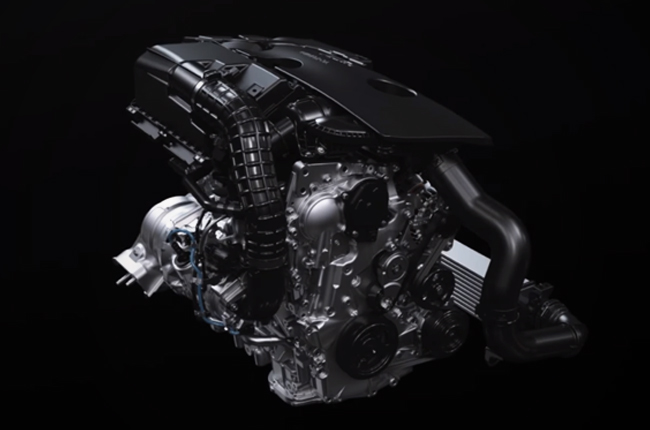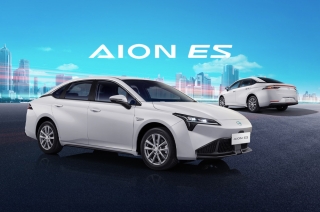
Have you heard about Infiniti's Variable Compression Turbocharged (VC-Turbo or VC-T) engine in 2017? That mill is finally being utilized by Nissan, which is basically the mainstream Infiniti. So, brace yourselves for Nissan-badged vehicles with their own VC-T blessing.
The first model to house this 2.0L four-cylinder VC-Turbo engine is the 2019 Altima, specifically the SR and Platinum trims. It is the same mill found under the hood of the all-new Infiniti QX50 crossover.
Right now, you might be wondering, how the heck does Nissan's 'Variable Compression' system work? How does it differ from Honda's V-TEC and Toyota's VVT-i, along all other variable valve timing engines by other brands? Allow us to share bit of our knowledge about it.
To begin with, variable compression ratio isn't another term for variable valve timing. Variable valve timing is the process of managing the opening and closing of the valves, a.k.a. valve lift event, to specific compression events in the cylinder. This is to control the intake and exhaust of gas inside your engine (because, different rpms require different engine performance).
Here's how variable valve timing works: in comes the fuel when the piston is retracted > fuel fills the cylinder > piston compresses and ignites the fuel > fuel expands, sending the piston down > other set of valves opens > piston contracts to send exhaust out.
The keyword in VVT is ‘timing’. Most engines with VVT has lobes to control the lifting of the valves. Higher revs will speed up the valve lift event, optimizing the combustion process.
Now, variable compression ratio, on the other hand, involves altering the height of the piston inside the cylinder through the use of another crankshaft. This additional crankshaft is connected to the piston's crankshaft through a conrod, controlled by a reduction gear called the Harmonic Drive. An electric motor rotates the gear in reaction to how much pressure you apply on the accelerator pedal.
The system explained above is called the multi-link, where more than one crank arm operates to control the piston's compression ratio.
This is basically how the VC-T works: floor the gas pedal and the reduction gear rotates. When this happens the angle of the multi-link arm changes, pulling the piston a bit downward, which then results to a low compression ratio. In other words, 'more power'.
Revert the process (meaning rotate the gear the other way) and you get higher positioning of the pistons for high compression ratio – happens during slow-paced drives, when you're not putting much pressure on the pedal.
The VC-T engine offers compression ratio between 8:1 and 14:1, which mean high performance and high efficiency, respectively. It delivers 248 hp and 370 Nm of torque. In addition, the single-scroll turbo allows faster accelerator response when needed, due to the utilization of two combustion cycles: the Atkinson and the regular combustion cycles.

So how big is this VC-Turbo engine? We know it puts out 248 hp, which Nissan claims close to some V6 engines out in the open. However, it's not as big as you think. In fact, it's more compact than the former engine of the Altima, which is a 3.5-liter V6. More compact engine requires less space in the engine bay, which offers more room for other components.
Now, why do we need the Nissan VC-Tubro engine in our lives? Well, fuel efficiency and performance combined in one engine, isn't that what we need? We just wish it would come here sooner so we can put it to test.
Latest News
-
Kia Philippines backs EJ Obiena as Atletang Ayala continues championing Filipino athletes / News
Kia Philippines strengthens its support for EJ Obiena, backing the Olympian with dedicated mobility at home and abroad.
-
Hongqi Philippines officially enters CAMPI, affirming its commitment to the Philippine automotive industry / News
Hongqi Philippines, under EVOxTerra, joins CAMPI to reinforce its growing presence in the Philippine market.
-
Five features that make the GAC AION ES a great daily driver / News
Thinking of shifting to electric vehicles for your next daily driver car? The GAC AION ES is definitely one to consider.
Popular Articles
-
Electric Vehicles in the Philippines for under P1 million
Jerome Tresvalles · Aug 19, 2025
-
Top 3 Cars For Every Lifestyle—What Cars Are Right For You? | Behind a Desk
Caco Tirona · Apr 24, 2024
-
5 Tips to Maximize Fuel Efficiency
Jerome Tresvalles · Sep 09, 2024
-
Five driving habits that are draining your fuel tank
Jerome Tresvalles · Jun 24, 2025
-
Can engine braking harm your engine?
Jerome Tresvalles · Sep 11, 2025
-
Do electric cars even need maintenance?
Jerome Tresvalles · Oct 23, 2024
-
Best vehicles for an active outdoor lifestyle
Shaynah Miranda · Jul 25, 2024
-
How to drive different types of vehicle transmissions
May 23, 2024
-
5 easy ways to keep your car interior clean
Allysa Mae Zulueta · Nov 15, 2021
-
How to survive Metro Manila traffic
Earl Lee · Aug 16, 2022



